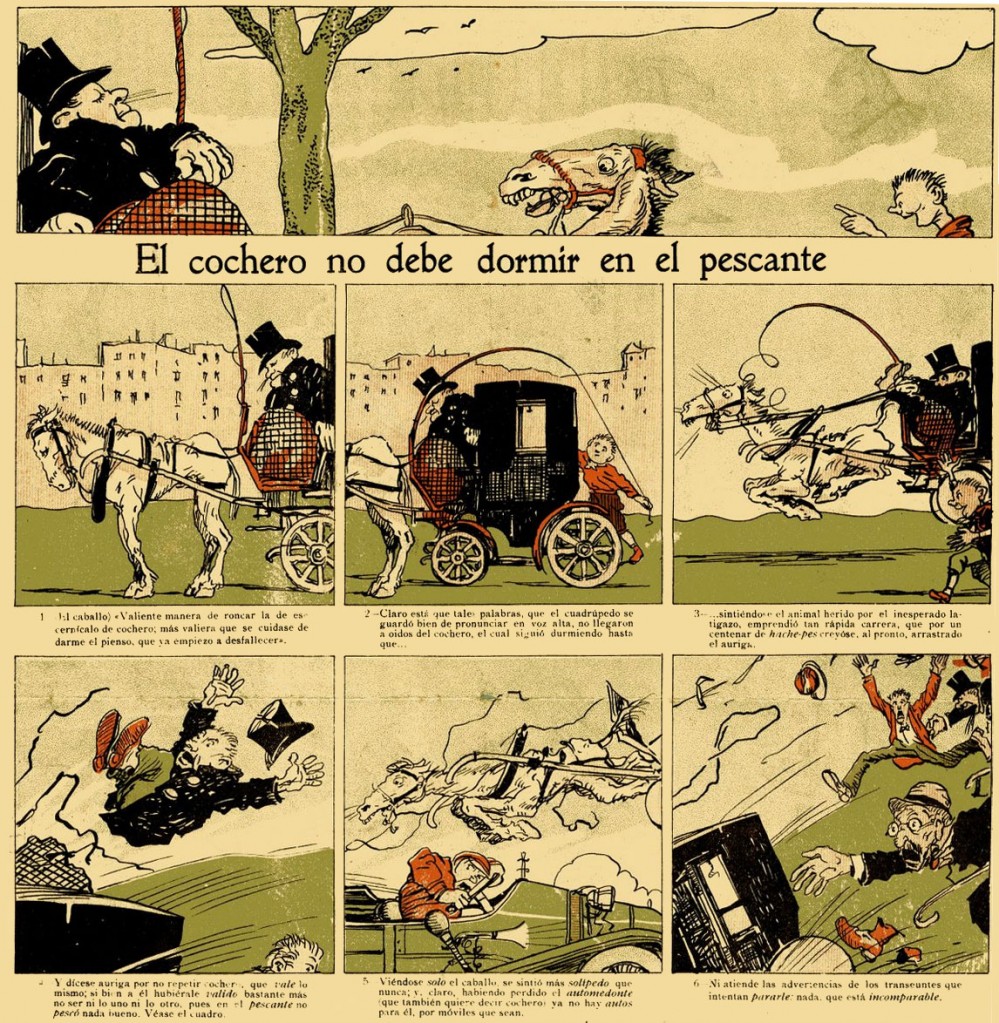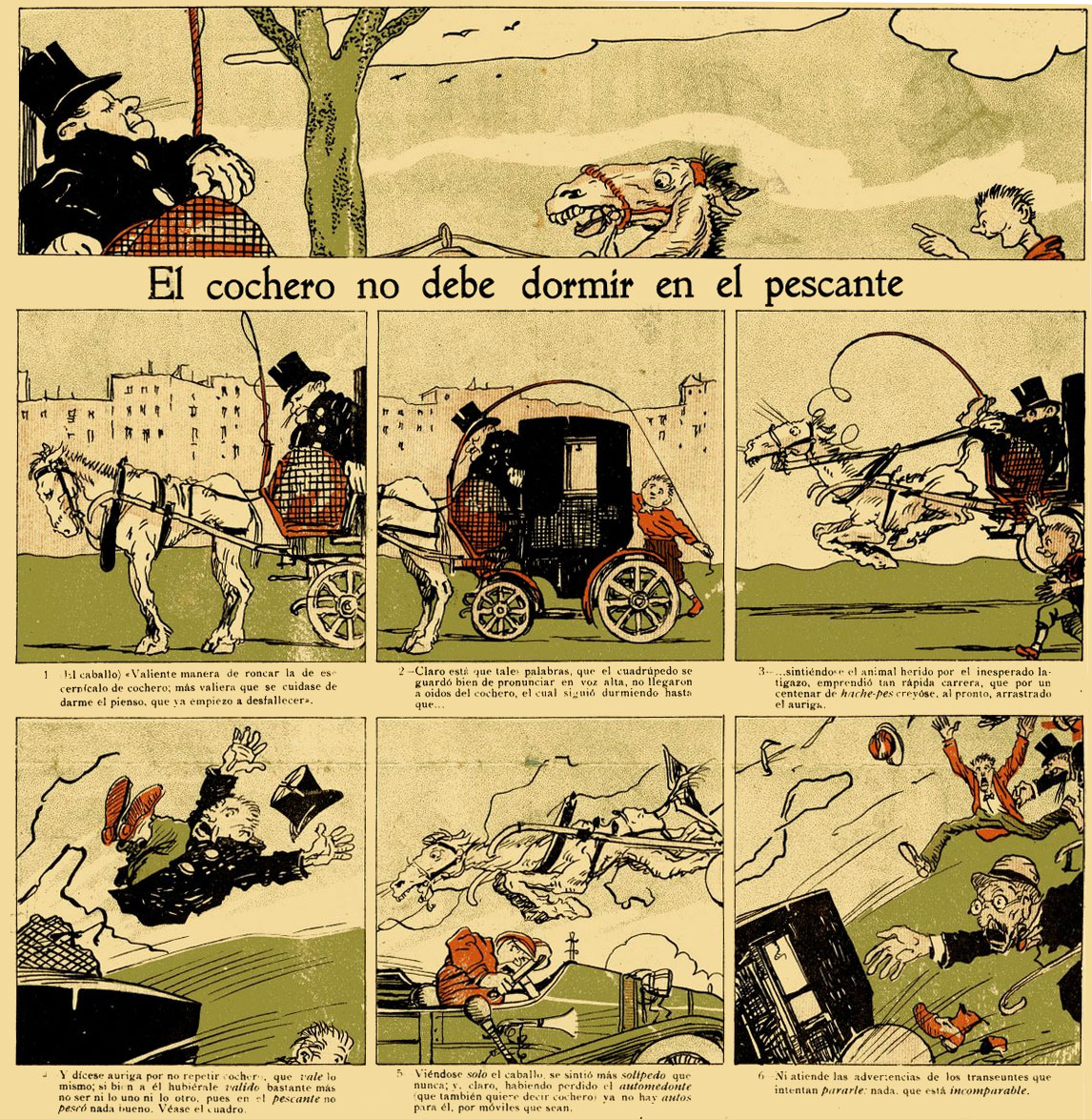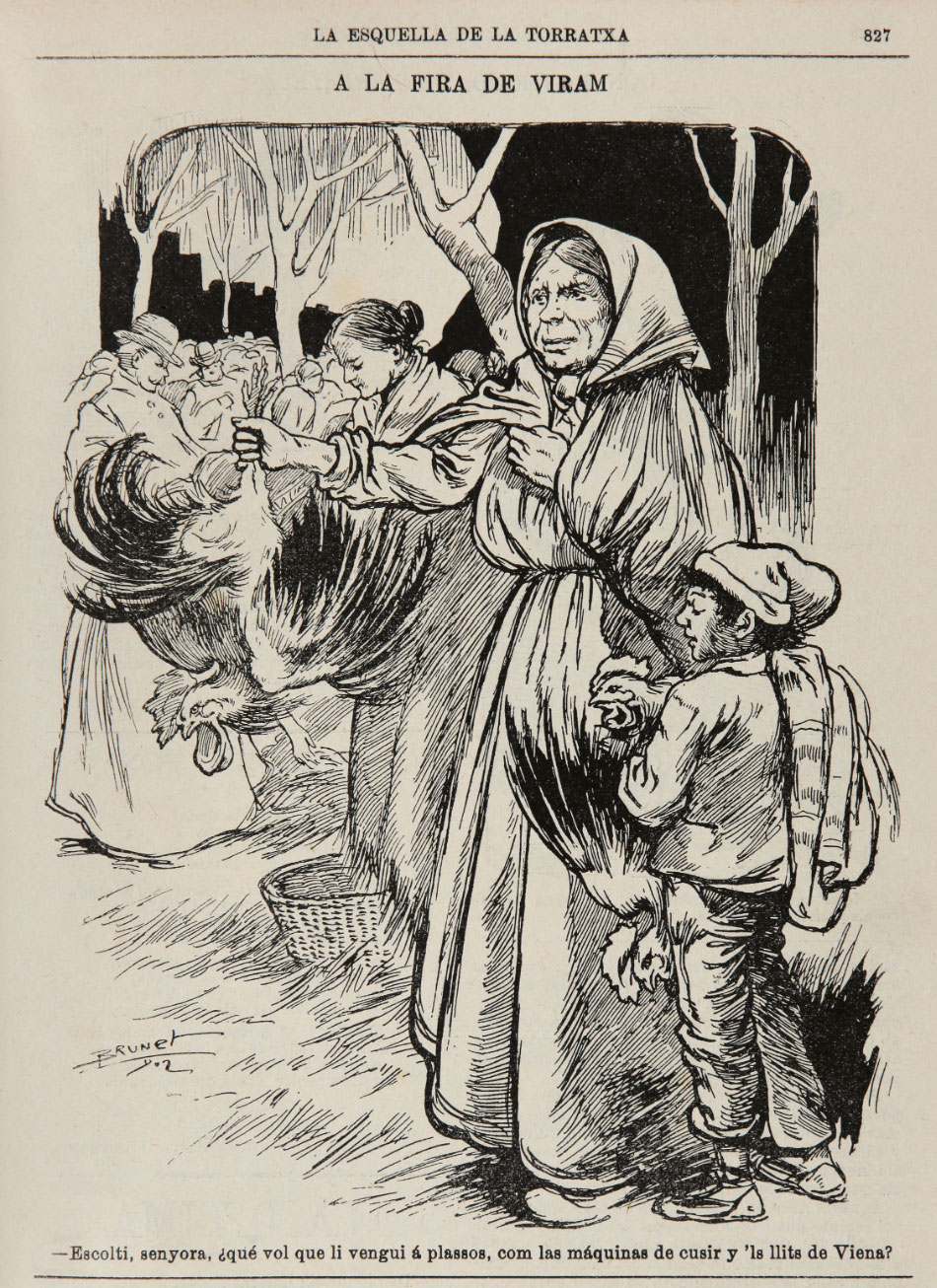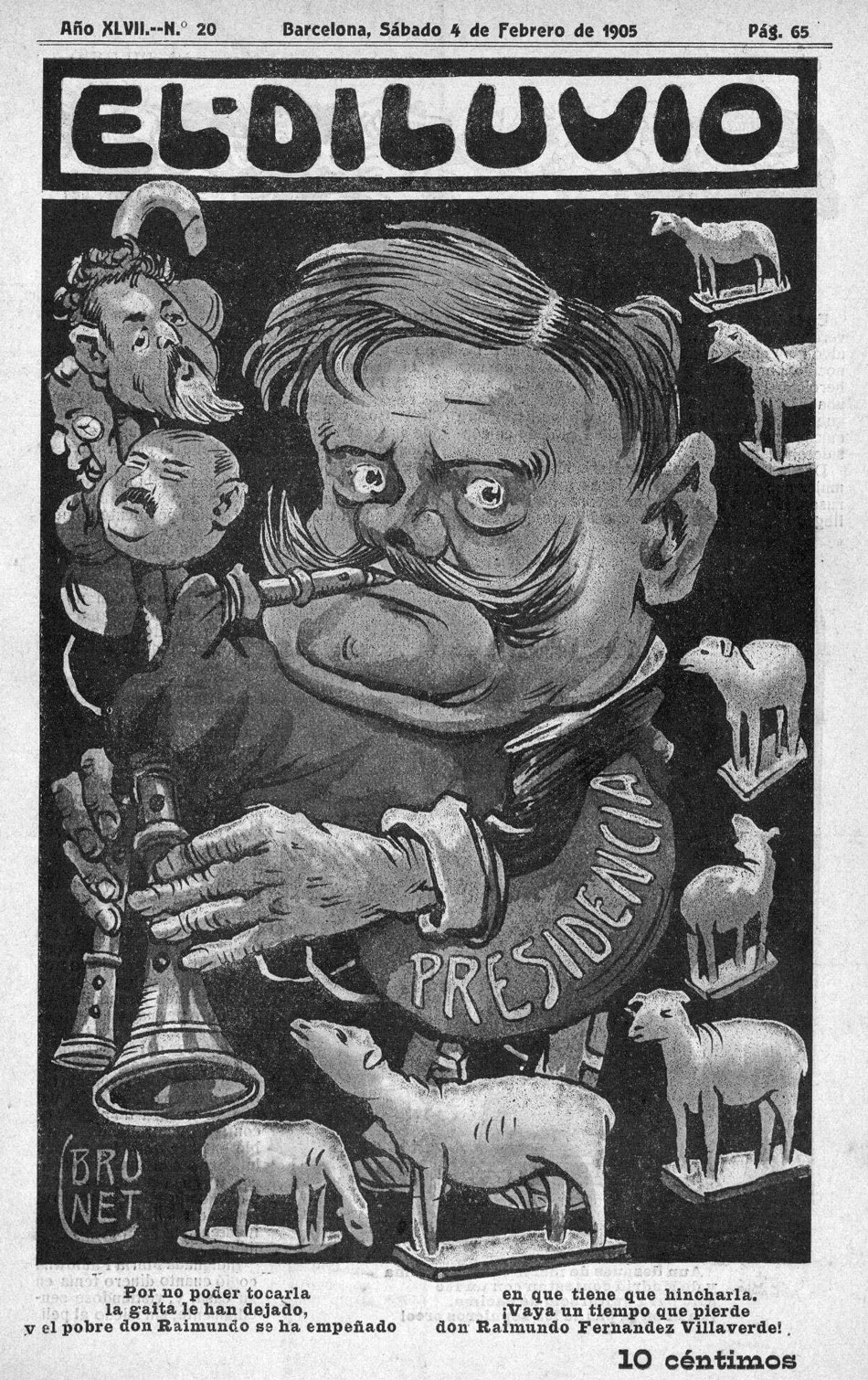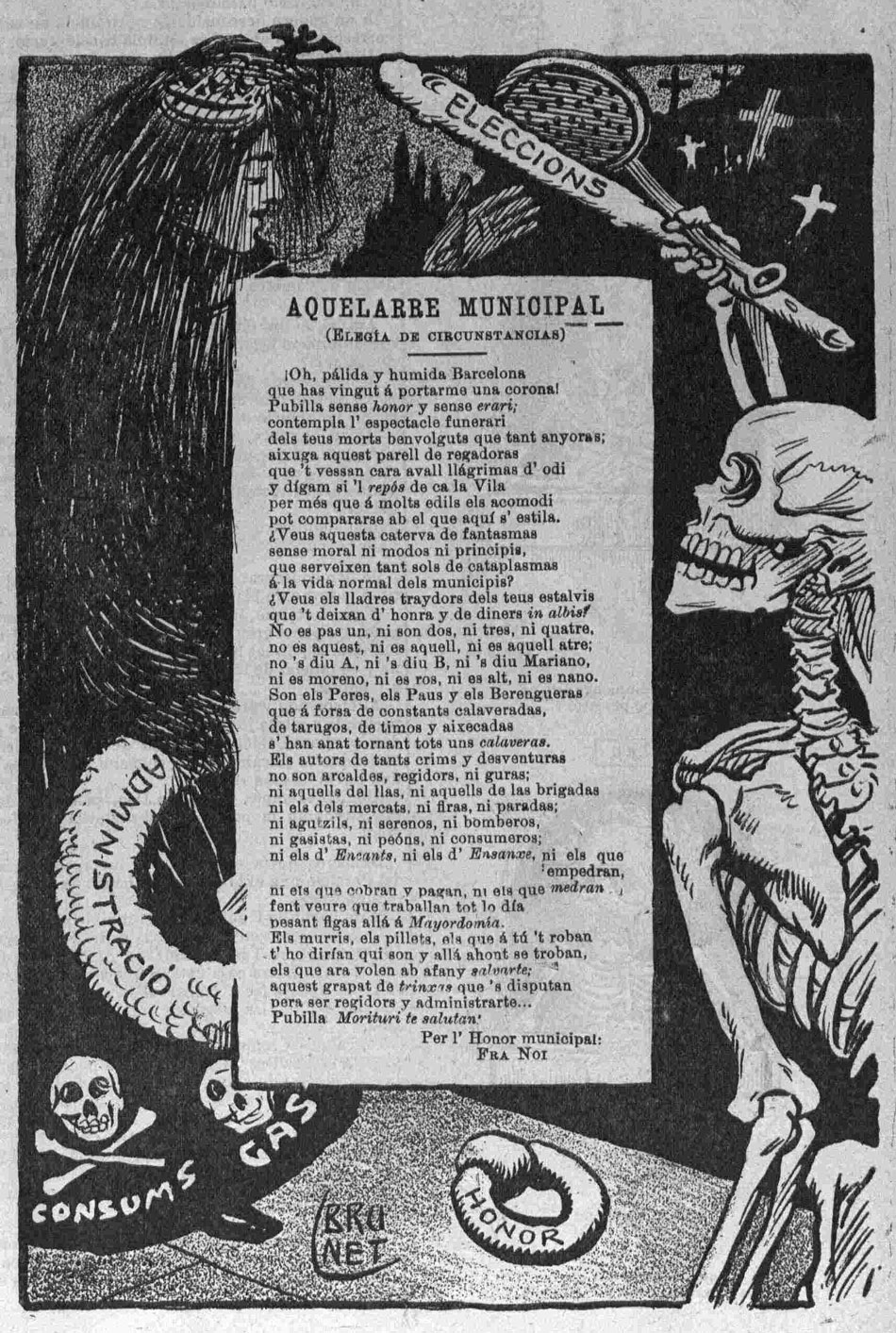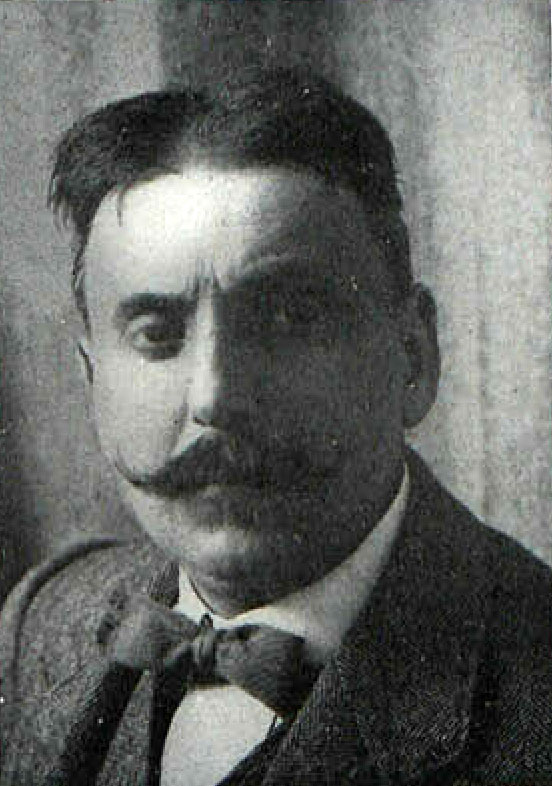'El Cochero no Debe Dormir en el Pescante' (Dominguín #6, l6 January 1916).
Llorenç Brunet was a Catalan cartoonist, caricaturist and watercolor painter, known under his pen name Bru-Net. Besides producing illustrations, decorative panels, designs, caricatures, advertisements, posters and satiric drawings, he was also a pioneer in Spanish comics for his contributions to the 1915-1916 picture story tabloid Domingúin.
Early life and career
Llorenç Brunet i Forroll (sometimes erroneously written as Llorenç Brunet i Torroll) was born in 1872 in Barcelona as the son of a primary school teacher. Showing an early talent for painting and drawing, one of his early tutors was a friend of his father, the painter Antoni Caba. Later on, Brunet attended the Llotja School of Fine Arts in Barcelona, where, besides Caba, his teachers were the painter Claudi Lorenzale and the graphic artist Eusebi Planas. As a teen, Brunet already won prizes in several competitions. His teacher Eusebi Planas arranged for his pupil to continue his studies in Paris, where Brunet was further trained by the lithographer Mercier. After his studies, he spent some time painting and drawing in Algeria, where he notably made the large oil on canvas 'El Iliurament de les Claus d'Orà al Cardenal Cisneros' ("The Handing over of the Keys of Orà to Cardinal Cisneros"). During his period, he also worked as illustrator for French and Spanish publishers.
After fulfilling his military service in Madrid - he reached the rank of corporal in the corps of engineers - Llorenç Brunet returned to Barcelona, where he built his family and continued his career in graphic arts. From 1910 until 1914, he resided with a scholarship in Leipzig, Germany. There, he specialized in making bookplates, while becoming a true Germanophile. During the early years of World War I, Brunet gained recognition for his graphic reports of the war conflict. Shortly after the Great War's outbreak, though, he returned to Barcelona, where he got a position as drawing teacher at the Arts & Crafts department of the Esscola del Treball.
Illustration for L'Esquella de la Torratxa (1902).
Graphic artist
In addition to his teaching work, Brunet worked as a graphic artist for bookplates, posters and magazines, often signing with Bru-Net. In his books 'Caps de casa' (1922) and 'Testes de la Terra-Catalunya' (1929), he captured various people from the Catalan regions in pen drawings. He also illustrated the book 'Monografia Histórico-Descriptiva de la Cartuja de Montalegre' (1921), a history by Pedro Cano Barranco's about the Cartuja de Montalegre monastery.
Brunet's illustrations, designs and caricatures appeared in the satirical magazines L'Esquella de la Torratxa, La Campana de Gràcia and La Campana Catalana, the newspapers El Diluvio and ABC, and the illustrated general interest magazines ¡Ja, Ja!, La Esfera, Lecturas and Palla Nova. For the tabloid comic weekly Dominguín (1915-1916) by publisher J. Espoy, Brunet created humorous picture stories like 'El Cochero no Debe Dormir en el Pescante' (issue #6, l6 January 1916), 'Por Meterse en Sociedad' (#8, 30 January 1916), 'Yo Quiero ser Constructor de Carruajes' (#12, 27 February 1916), and 'Chinadas de un Chino' (#13, 5 March 1916).
Caricature for Il Diluvio, 4 February 1905.
Painter
As a painter, Brunet made landscapes, most notably from the Serra de la Marina mountain range and especially of the historical La Conreria site. Some of his landscapes were published in 1889 in the magazine La Ilustración Ibérica. With his watercolor paintings, the artist regularly participated in national and international exhibitions - he took part in the Barcelona expositions of 1911, 1918, 1919 and 1921 - and was awarded with several prizes. These distinctions earned him a spot in the Spanish committee of the Rivoli International Exhibition.
Later life
In addition to his creative work, Brunet was a collector of Catalan art and antiques, which he gathered in his "Cau Brunet" house, a tower in the Colonia-Bosc de la Conreria housing estate in Sant Fost de Campsentelles.
When in 1931 the Second Republic was established in Spain, Llorenç Brunet was dismissed from his teaching job at the Esscola del Treball, presumably because he was appointed during Spain's monarchical period. Upset and demoralized, Brunet asked his friend Apeles Mestres to intercede for him, but to no avail. The Spanish Civil War heralded in a period with even more distress. Brunet's house was searched several times, he had to be hospitalized due to an infection in his arm and his daughter Maria Teresa fell ill and died. A year after this terrible ordeal, Llorenç Brunet passed away in October 1939, at the age of 67.
Illustration from La Campana de Gràcia #1798 (31 October 1903).
Legacy
During his lifetime, Brunet counted many notable writers, politicians and royals among his admirers, including Segismundo Moret, Nicolás Salmerón, the king of Saxony, the Prince of Wüttemberg, Santiago Ramón y Cajal, Eduardo Dato, Antoni Maura and Bermúdez Reina. After his death, however, he quickly faded into obscurity. In 2018, Llorenç Brunet was brought back to the public attention when the Museum of Badalona dedicated an exhibition to his World War I drawings.
As a contributor to Dominguín, one of Spain's earliest comic papers, Brunet ranks as one of the pioneers of Spanish comics, together with fellow contributors like Lola Anglada, Apa, Donaz, Junceda, Joan Llaverías, Ricard Opisso and Res (Ramón Espoy de Samá).
Llorenç Brunet i Forroll.


